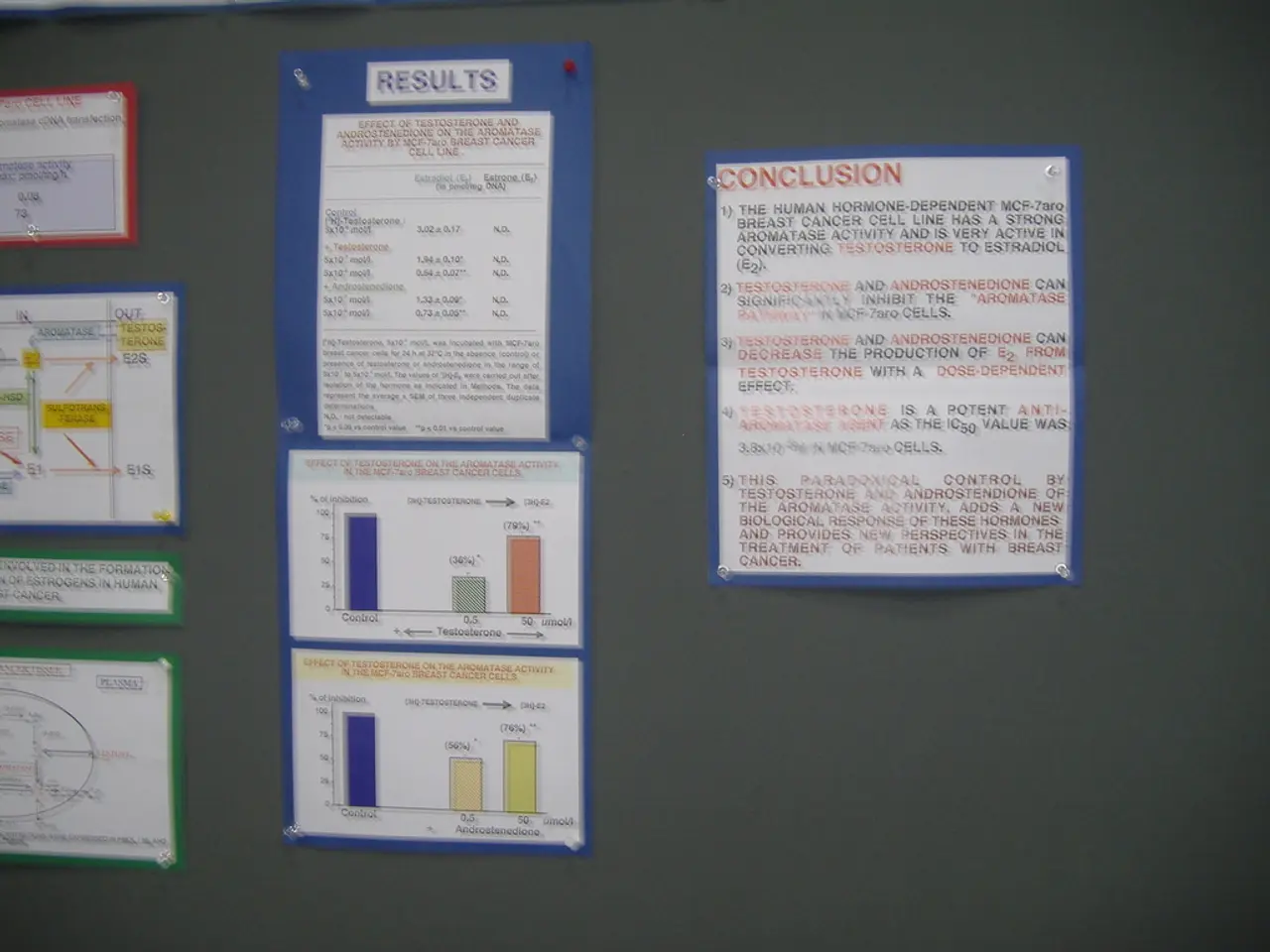Data Represented in Stunning Visuals: A Revelation in Graphic Presentations
Data visualization plays a crucial role in business decision-making, as it helps demonstrate trends, dependencies, and deviations of indicators in an informative and interactive way.
Beginners in analytics often make the mistake of starting axes from non-zero points, leading to incorrect data interpretation. To avoid this, it's essential to choose the right visualization type for the data and message, such as line charts for trends, bar charts for comparisons, scatter plots for relationships, and pie charts for proportions.
Simplifying visuals is another key practice. This can be achieved by removing unnecessary gridlines, limiting color palettes, using clear labels, and avoiding decorative effects that distract from the data. Designing dashboards and visual layouts with a clear hierarchy, placing key metrics in the most prominent positions, and using whitespace to reduce clutter further enhances readability.
Providing contextual information like benchmarks, targets, conditional formatting, and trend lines helps decision-makers quickly interpret performance and spot patterns. Maintaining accuracy and integrity is also crucial, as using truthful data and not manipulating scales or time frames to distort insights is essential.
Incorporating these practices supports faster, better-informed business decisions by making complex data accessible and actionable. It's important to remember that good visualizations are tailored to the audience, purpose, and context of the data presentation.
Specialists responsible for data visualization for business analysis aim to improve the user experience for decision-makers, ensuring optimal user interaction with an analytical report or dashboard. For quick reviews, simple diagrams that can be understood in 1-2 seconds are appropriate. For complex corporate processes, detailed visualizations are needed.
Visualizations should be adopted for various types of devices, such as PCs, laptops, tablets, smartphones, etc. It's better to never use a log scale in visualization as it is non-linear. A clear legend is necessary when diagrams have several lines, to show what each line represents.
Integrating Corporate style and identity into your visualization is significant, including the company's colour scheme and fonts. Navigation should be provided in visualizations to switch to various types of diagrams and perform actions like sorting values by years, quarters, months, branches, and so on.
Avoid using several Y axes as it may lead to confusion and prevent better interpretation of the data. Minimalism in visualization is important, with fewer details making it easier to read and understand the data.
Incorrect data visualization can lead to poor management decisions and significant losses for a company. Therefore, it's important to understand the interactivity of visualizations, as interactive visualization requires a different approach compared to static visualization.
Lastly, it's worth noting that data have to be correctly prepared for visualization, so that the amount of data loaded into a report is minimal to ensure quick loading times. Andrew Bush, the founder and CEO of A17 Technologies company, discusses the importance of data visualization in decision-making.
[1] Data Visualization Best Practices: A Guide for Business Analysts - DataCamp [2] The Importance of Data Visualization in Business - Forbes [3] Data Visualization: A Practical Guide for Business Analytics - John Wiley & Sons [4] The Role of Data Visualization in Business Decision-Making - Harvard Business Review [5] The Power of Data Visualization: How to Make Data-Driven Decisions - O'Reilly Media
Technology plays a significant role in the field of business analytics, as it provides tools and resources for creating effective data visualizations. These visualizations aid in quicker and more informed decision-making processes by making complex data more accessible and interpretable. Understanding the best practices for data visualization, such as incorporating interactivity, minimizing clutter, and placing key metrics in prominent positions, is crucial for specialists responsible for data visualization in business analysis.




